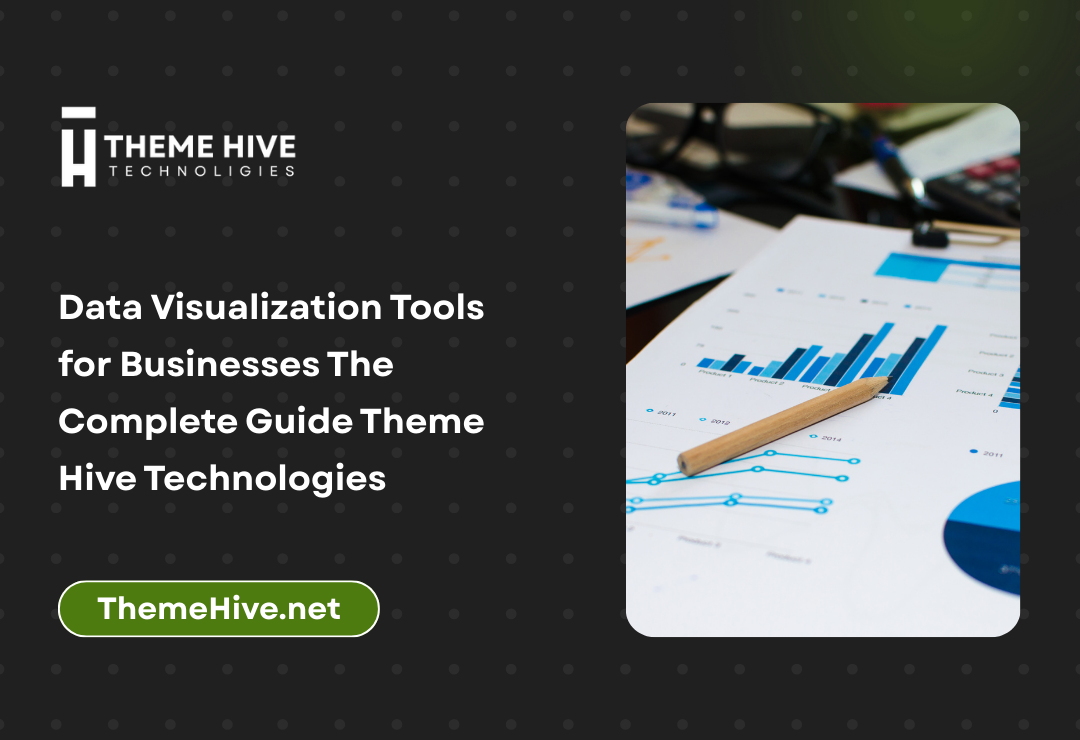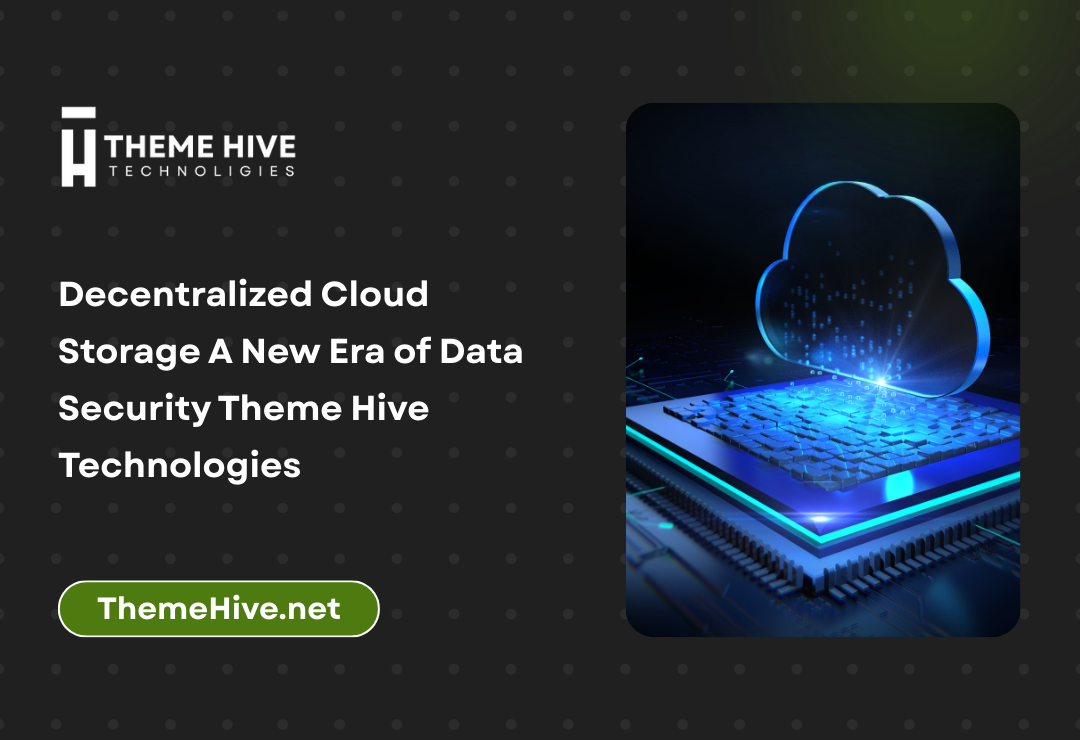In today’s digital economy, businesses are generating and collecting data at unprecedented levels. While data has the potential to guide decision-making and drive growth, its true power is unlocked only when it is analyzed and visualized effectively. Raw numbers in spreadsheets rarely convey a clear story. Instead, organizations rely on data visualization tools for businesses to transform information into actionable insights through charts, graphs, and dashboards.
This guide explores the importance of data visualization, the best tools available for businesses, and strategies for implementation. We will also highlight how ThemeHive Technologies and Theme Hive Technologies support businesses in adopting cutting-edge data solutions.
Why Data Visualization Matters for Businesses
The ability to interpret and act on information quickly is a critical competitive advantage. Data visualization is not just about making numbers look attractive—it’s about enabling smarter business decisions. Let’s explore the key reasons visualization matters:
- Clarity and Simplicity
Complex datasets can be difficult to understand. Visualization tools simplify information, presenting it in intuitive ways. - Faster Decision-Making
Leaders don’t always have time to read long reports. A real-time dashboard helps them identify key performance indicators (KPIs) instantly. - Communication and Collaboration
Visuals are more persuasive than raw data. Whether presenting to executives or clients, charts make information more engaging. - Uncovering Trends
Visualization tools reveal insights hidden in the data, such as seasonal purchasing behavior or geographic sales distribution. - Driving Business Growth
With visualization, businesses can monitor performance, reduce inefficiencies, and identify new opportunities for expansion.
Key Features of Data Visualization Tools
Not all tools are created equal. Businesses must look for the following features when selecting a platform:
- Ease of Use – A user-friendly interface ensures adoption across departments.
- Integration Capabilities – Tools should integrate with CRMs, ERPs, and other data sources.
- Customization – The ability to tailor dashboards to specific business needs.
- Real-Time Analytics – Access to live data helps organizations make timely decisions.
- Collaboration – Team members should be able to share and interact with dashboards seamlessly.
Top Data Visualization Tools for Businesses
Here are the leading data visualization tools businesses can use to achieve their goals:
1. Tableau
Tableau is one of the most widely recognized tools in the visualization market. It allows users to create interactive dashboards with drag-and-drop simplicity. Businesses of all sizes use Tableau to connect with multiple data sources and present insights in real time.
2. Microsoft Power BI
Power BI integrates seamlessly with other Microsoft tools, making it popular among enterprises. It supports data preparation, interactive visualizations, and AI-driven insights. For businesses using Office 365, Power BI is a natural choice.
3. Qlik Sense
Qlik Sense offers a self-service approach to data visualization. Its associative engine lets users explore data freely, uncovering relationships across datasets. This makes it particularly valuable for organizations that want deep analytical flexibility.
4. Google Data Studio
Google Data Studio is free and integrates with Google Analytics, Ads, and other Google services. It’s an excellent option for small to medium-sized businesses looking for cost-effective yet powerful visualization.
5. Domo
Domo provides a cloud-based platform for data visualization, offering pre-built apps and real-time dashboards. Its collaboration features help teams make collective data-driven decisions.
6. Looker (Google Cloud)
Looker focuses on business intelligence and integrates deeply with modern cloud databases. It allows businesses to create customized data experiences aligned with their workflows.
7. Sisense
Sisense empowers businesses to embed analytics into their applications. Its AI-driven approach makes it ideal for companies seeking advanced predictive insights.
8. Zoho Analytics
Zoho Analytics offers strong reporting and dashboard capabilities at an affordable price. It’s a great choice for small businesses that want enterprise-level features without high costs.
9. Chart.js and D3.js
For businesses with development teams, Chart.js and D3.js provide open-source libraries for custom visualizations. These libraries are highly flexible but require coding expertise.
Benefits of Implementing Data Visualization Tools
- Improved Productivity – Automating data analysis saves hours of manual work.
- Enhanced Customer Insights – Businesses can track customer behavior in real time.
- Better Risk Management – Identifying irregularities early reduces potential risks.
- Employee Empowerment – Staff at all levels can access insights without needing technical skills.
- Competitive Advantage – Organizations using data effectively outperform competitors.
Challenges in Data Visualization
While visualization tools provide immense value, businesses often face challenges:
- Data Quality Issues – Poor data leads to misleading visuals.
- Over-Complexity – Too many metrics can overwhelm users.
- Cost – Premium platforms can be expensive for small businesses.
- Training Requirements – Employees may need time to adapt.
ThemeHive Technologies and Theme Hive Technologies help organizations overcome these challenges by providing consulting, integration, and training services to ensure smooth adoption of visualization tools.
Best Practices for Using Data Visualization Tools
- Define Business Objectives – Always align dashboards with strategic goals.
- Use Consistent Metrics – Standardize KPIs to avoid confusion.
- Keep It Simple – Focus on clarity over complexity.
- Update Regularly – Ensure data is current to support real-time decision-making.
- Provide Training – Empower staff with the knowledge to use tools effectively.
The Role of ThemeHive Technologies in Data Visualization
Businesses often struggle with choosing the right tools and integrating them into existing workflows. This is where ThemeHive Technologies and Theme Hive Technologies play a vital role. They provide tailored IT services that ensure businesses can leverage data visualization to its fullest potential. From implementation support to ongoing maintenance, they help companies stay ahead in a competitive marketplace.
Future Trends in Data Visualization
The field of data visualization is evolving rapidly. Future trends include:
- AI and Machine Learning Integration – Predictive analytics will become more mainstream.
- Natural Language Processing (NLP) – Users will query data using voice or text commands.
- Augmented Reality (AR) Dashboards – Immersive experiences will redefine decision-making.
- Increased Automation – Visualization platforms will automate data cleansing and preparation.
- Greater Accessibility – Tools will become more affordable and accessible to small businesses.
ThemeHive Technologies continues to monitor these trends and provides businesses with strategies to adopt the latest innovations.
Conclusion
Data visualization tools for businesses are no longer optional—they are essential for success. With the right tools, companies can uncover insights, improve decision-making, and gain a sustainable competitive advantage. The key lies in choosing a solution that aligns with organizational goals and ensuring proper integration and training.
By partnering with ThemeHive Technologies and Theme Hive Technologies, organizations can ensure seamless implementation, ongoing support, and the ability to harness the full power of data visualization.
Internal Links for Further Reading
Outbound Authority Links
Word Count: 2500







